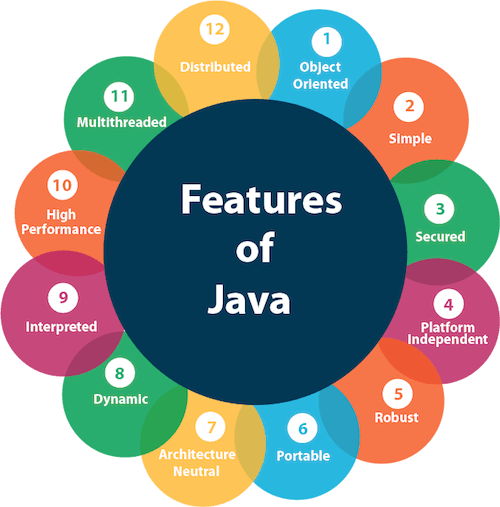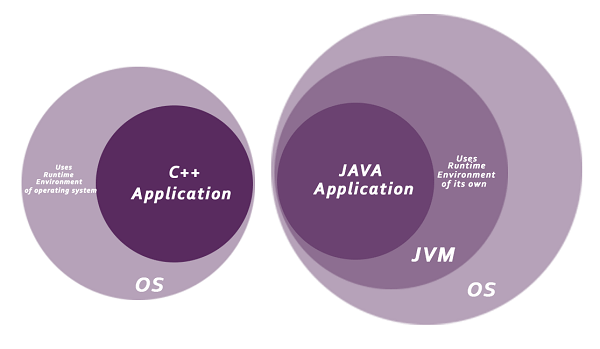Features of JavaThe primary objective of Java programming language creation was to make it portable, simple and secure programming language. Apart from this, there are also some excellent features which play an important role in the popularity of this language. The features of Java are also known as Java buzzwords. A list of the most important features of the Java language is given below. 
SimpleJava is very easy to learn, and its syntax is simple, clean and easy to understand. According to Sun Microsystem, Java language is a simple programming language because:
Object-orientedJava is an object-oriented programming language. Everything in Java is an object. Object-oriented means we organize our software as a combination of different types of objects that incorporate both data and behavior. Object-oriented programming (OOPs) is a methodology that simplifies software development and maintenance by providing some rules. Basic concepts of OOPs are: Platform Independent
Java is platform independent because it is different from other languages like C, C++, etc. which are compiled into platform specific machines while Java is a write once, run anywhere language. A platform is the hardware or software environment in which a program runs. There are two types of platforms software-based and hardware-based. Java provides a software-based platform. The Java platform differs from most other platforms in the sense that it is a software-based platform that runs on top of other hardware-based platforms. It has two components:
Java code can be executed on multiple platforms, for example, Windows, Linux, Sun Solaris, Mac/OS, etc. Java code is compiled by the compiler and converted into bytecode. This bytecode is a platform-independent code because it can be run on multiple platforms, i.e., Write Once and Run Anywhere (WORA). SecuredJava is best known for its security. With Java, we can develop virus-free systems. Java is secured because:

Java language provides these securities by default. Some security can also be provided by an application developer explicitly through SSL, JAAS, Cryptography, etc. RobustThe English mining of Robust is strong. Java is robust because:
Architecture-neutralJava is architecture neutral because there are no implementation dependent features, for example, the size of primitive types is fixed. In C programming, int data type occupies 2 bytes of memory for 32-bit architecture and 4 bytes of memory for 64-bit architecture. However, it occupies 4 bytes of memory for both 32 and 64-bit architectures in Java. PortableJava is portable because it facilitates you to carry the Java bytecode to any platform. It doesn't require any implementation. High-performanceJava is faster than other traditional interpreted programming languages because Java bytecode is "close" to native code. It is still a little bit slower than a compiled language (e.g., C++). Java is an interpreted language that is why it is slower than compiled languages, e.g., C, C++, etc. DistributedJava is distributed because it facilitates users to create distributed applications in Java. RMI and EJB are used for creating distributed applications. This feature of Java makes us able to access files by calling the methods from any machine on the internet. Multi-threadedA thread is like a separate program, executing concurrently. We can write Java programs that deal with many tasks at once by defining multiple threads. The main advantage of multi-threading is that it doesn't occupy memory for each thread. It shares a common memory area. Threads are important for multi-media, Web applications, etc. DynamicJava is a dynamic language. It supports the dynamic loading of classes. It means classes are loaded on demand. It also supports functions from its native languages, i.e., C and C++. Java supports dynamic compilation and automatic memory management (garbage collection).
Next TopicC++ vs Java
|
 For Videos Join Our Youtube Channel: Join Now
For Videos Join Our Youtube Channel: Join Now
Feedback
- Send your Feedback to [email protected]
Help Others, Please Share










